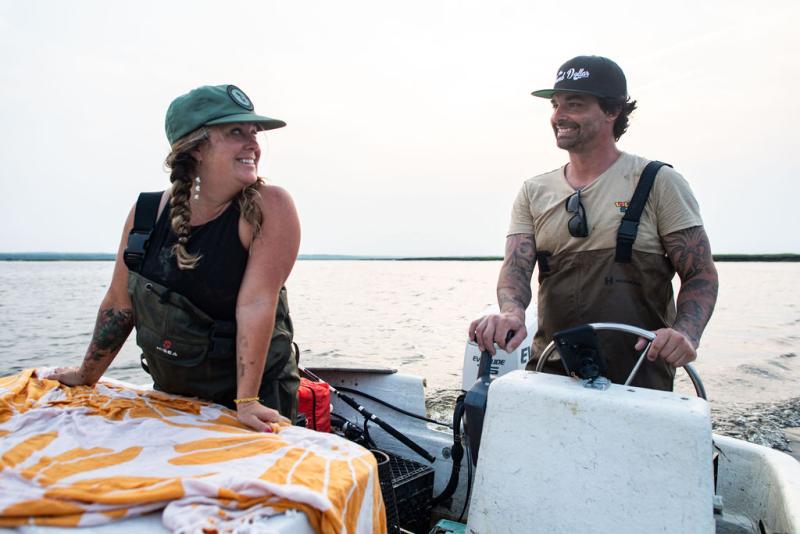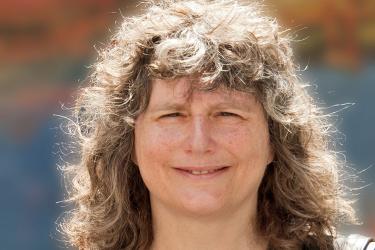This National Siblings Day, we caught up with Julien and Stephanie Swanson, a brother-sister duo with a passion for feeding sustainable seafood to their Cape Cod community. If it’s nearing low tide and above freezing temperatures, you’ll find these two tending to their oysters and even having fun while they do it. When they’re not on the farm, they’re likely serving their harvest—and other local favorites—at their family’s seafood restaurant. Shellfish aquaculture businesses, like their oyster farm, bring healthy, sustainable seafood to your table.
Farming from Oyster “Seed” to Table
Originally from Houston, Texas, Stephanie and Julien inherited a deep appreciation for locally sourced seafood from their parents who are both chefs. They grew up visiting family on the Atlantic coast and the southwest coast of France, regions known for their oysters. In 2006, when their mother took over as owner and head chef at The Naked Oyster seafood restaurant on Cape Cod, they were primed to dive into the world of New England seafood.
In 2007, the opportunity presented itself for the family to take over an oyster farm and the Swansons eagerly embraced it. “We originally got the oyster farm because of the restaurant,” explains Stephanie. “Sourcing high-quality oysters right from our own farm gives us more control over our product,” adds Julien.
Siblings On the Water
Sibling dynamics are unique. Luckily for Julien and Stephanie, their experience working together in the high-stress realm of restaurants has manifested in a “divide and conquer” approach on their farm. “Being siblings makes it a little bit easier to nurture what you’re good at,” explains Julien. “No one is barking orders on the farm. Sometimes we don’t even have to talk in order to get things done. We just intuitively know how to work alongside each other and adapt to what works best for our oysters.” This close-knit relationship extends beyond their demanding schedules, which entail balancing farm work 3–4 days a week with full-time hours at the restaurant. “We still have ‘sibling Sundays’ after all that,” laughs Stephanie.
Both Julien and Stephanie have shellfish aquaculture licenses. This allows them to plant, culture, and harvest oysters on the land leased to them by the town of Barnstable and certified by the state of Massachusetts. These shellfish farming allotments are carefully sited in areas that ensure clean growing conditions for the oysters, with minimal environmental impact and user conflict.
The farm demands round-the-clock dedication, ingenuity, and a knack for improvisation. “We’re always adapting to be more efficient, from figuring out what gear works best to even what we’re wearing,” shares Julien. He’s the “MacGyver” of the family. “He’s constantly coming up with inventive ways to do things,” notes Stephanie, the taskmaster of the two. “We’re a small farm, so we don’t have the expensive equipment that some large farms have. Every oyster is sorted by hand, so Julien came up with a way to quickly sort 250,000 oysters using modified fish totes.”
Navigating Sandbars and Paperwork
The Swanson family oyster farm is just a 15-minute boat ride from Cape Cod’s Barnstable Harbor. Their oyster cages are easily accessible when exposed during low tide, but navigating the shallow waters to get to them can be tricky. “It was a learning curve trying to get out there and avoid grounding the boat on one of the sandbars in the area. We’re not as confident as some of the farmers who have done this every year for 40 years,'' Stephanie acknowledges. “If we don’t want to get our boat stuck for 10 hours—which has happened—we really need to watch the tide.”
But sandbars aren't the only challenge they have to navigate. The Swansons—like all U.S. aquaculture operators—must comply with a number of federal, state, and local regulations that ensure they produce environmentally safe, sustainable seafood. “Getting the farm up and running was a lot of waiting and a lot of paperwork, meticulously ensuring we crossed every ‘t’ and dotted every ‘i,’” reflected Julien. Fortunately, they have a secret weapon in their mom, who has a background as a librarian and a knack for paperwork. She lends a helping hand with the administrative tasks. “Even after that, we have to maintain food safety standards and log how many oysters we’re growing and harvesting. It would be easy to fall behind, but we’re diligent about keeping records even when not explicitly required,” shares Stephanie.
The hard work is worth it to grow quality food that is not only delicious but also beneficial for the environment. Oysters are efficient filter feeders—they play a vital role in maintaining water quality by absorbing excess nutrients. They also provide habitat for marine life. Like many shellfish farmers, Stephanie and Julien frequently see fish, horseshoe crabs, and other marine life taking shelter in and around their cages. “It’s great to know that what we’re doing is actually helping the environment,” says Julien. “The whole point is that it’s beautiful out there and it’s nice to actually be out on the farm.”
Serving Up Local Flavors
It can take up to 2 years for the Swansons’ oysters to grow from the 2-millimeter juvenile “seeds” they plant on their farm to a size suitable for serving at the restaurant. During this “growout” period, the oysters are heavily influenced by their environment. The shape of an oyster’s shell and the flavors inside reflect the conditions where it was raised. Thanks to the high flow of estuarine water at the Swansons’ farm, their oysters boast a deep shell cup and a crisp, briny taste.
While their own harvest features prominently on the menu, the Swansons take great pride in supporting local food producers by serving products from across the region. Wherever possible, Chef Julien sources from local fishermen and farmers to ensure that their dishes are made with fresh, responsibly harvested products. “It’s not just about acquiring an environmentally sustainable product. It’s about who is fishing for that product, how they are fishing for it, and what the working conditions are for those people,” emphasizes Julien.
Operating both a family-run restaurant and farm allows the Swansons to foster meaningful connections within their community. “We’ve been in business for 19 years and have a lot of regulars that know us personally,” notes Stephanie. “They know we’re on the farm in the morning, and we come to the restaurant straight after, and that leads to some great connections and conversations.”






